
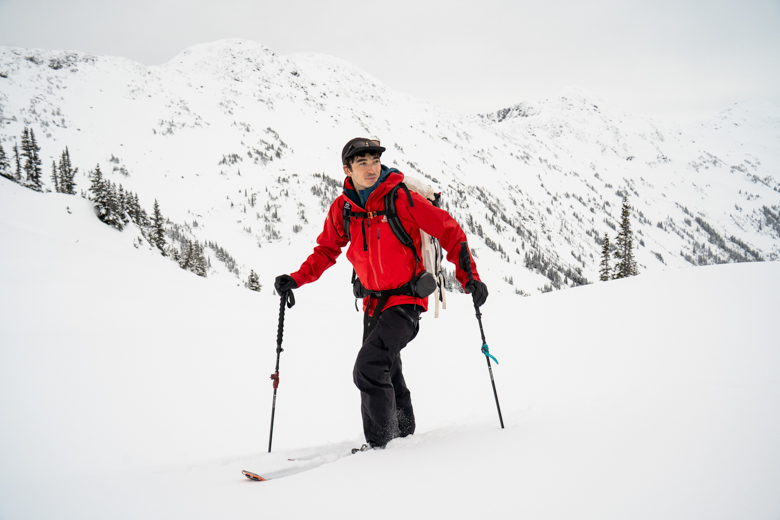
Price: $430
Weight: 2 lb. 2.0 oz. (men's medium)
Waterproofing: 3L Gore-Tex ePE
What we like: A highly protective and durable hardshell with a versatile feature set at a competitive price.
What we don’t: Not the most breathable or lightweight option; lacks many ski-specific features.
See the Men's ME Makalu Jacket See the Women's ME Makalu Jacket
For over 50 years, Mountain Equipment has been a go-to brand for climbers and mountaineers tackling the harshest conditions in Europe. Their Makalu Jacket stands out as one of the most versatile hard shells on the market, built with a rugged 75-denier (D) Gore-Tex ePE fabric and packed with features that make it a top choice for technical mountain activities. While it is designed for hiking and climbing, I put the Makalu to the test through a winter of ski touring and hiking in the Pacific Northwest and came away very impressed. With its durable construction, alpine-ready design, and comfortable fit, this jacket is an incredible all-rounder for mountain adventures. Below I detail my experiences with the Mountain Equipment Makalu Jacket. For a wider view of the market, see our article on the best hardshell jackets.
Designed for mountaineering, climbing, and hiking in the worst weather that the United Kingdom can whip up (think: torrential freezing rain), it should come as no surprise that the Mountain Equipment Makalu is a highly protective jacket. It never gave me reason to doubt its weatherproofing, even in the challenging testing grounds of the Pacific Northwest. The 75D Gore-Tex ePE membrane shrugged off any weather I faced, including hours of ski touring in sleet and rain during a particularly warm spring day. The Makalu is well-equipped with YKK AquaGuard zippers throughout, including the hand and chest pockets, and storm flaps to further block moisture and wind. The helmet-compatible hood and high collar offered fortress-like protection from blowing wind, rain, and snow, and the stiffened hood deflected moisture away from my face. If I were to nitpick, I wish the cut of the jacket was slightly longer for resort skiing, where having protection from soggy chairlifts is paramount. That said, the added material would affect the bulk, weight, and strong backcountry appeal this jacket has. Overall, I found it to be best suited for out-of-bounds treks in most kinds of soggy and cold weather.
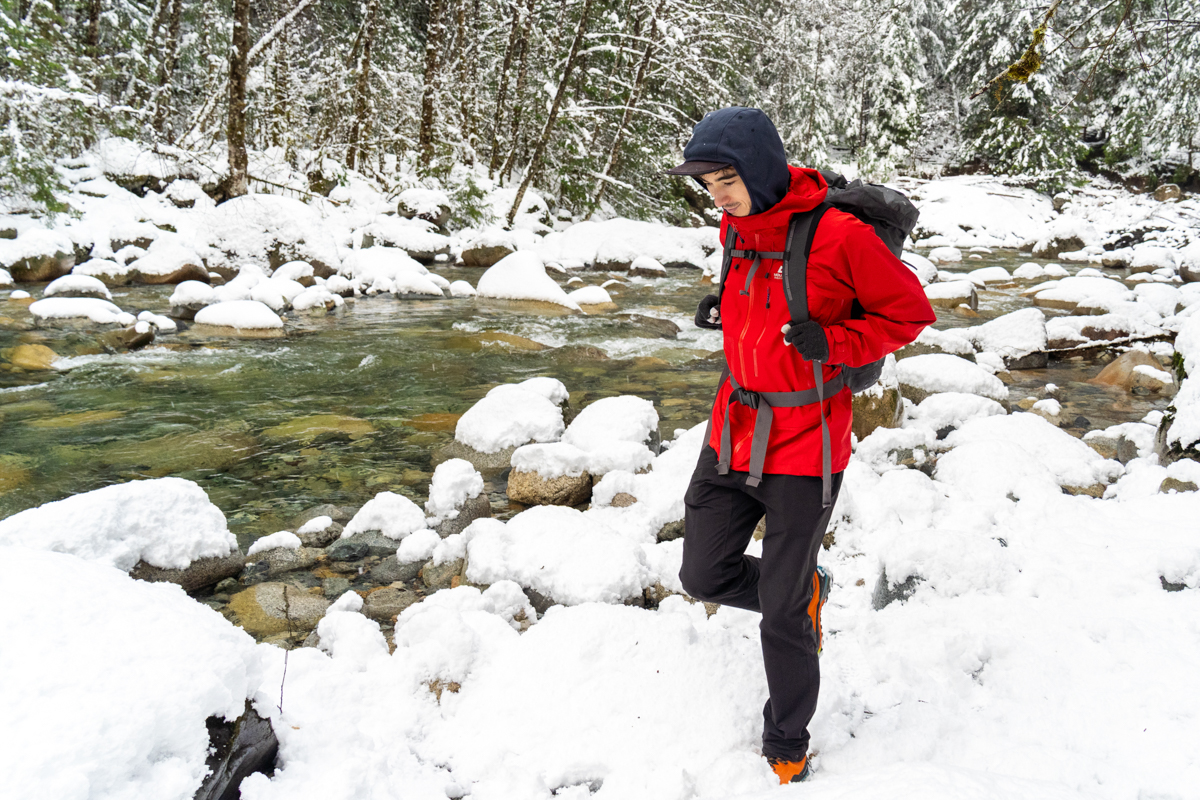
The Makalu’s burly 75D Gore-Tex fabric is purpose-built for tackling rough conditions, but that durability comes at the cost of breathability. This isn’t an issue unique to the Makalu: Even thinner Gore-Tex membranes struggle to provide enough airflow to be worn on heart-pumping activities, like climbing steep skin tracks or booting up glaciers. I found myself relying heavily on the Makalu’s ventilation, which includes long underarm zips and a two-way main zipper that can be opened from the bottom for a boost in airflow without compromising protection too much.
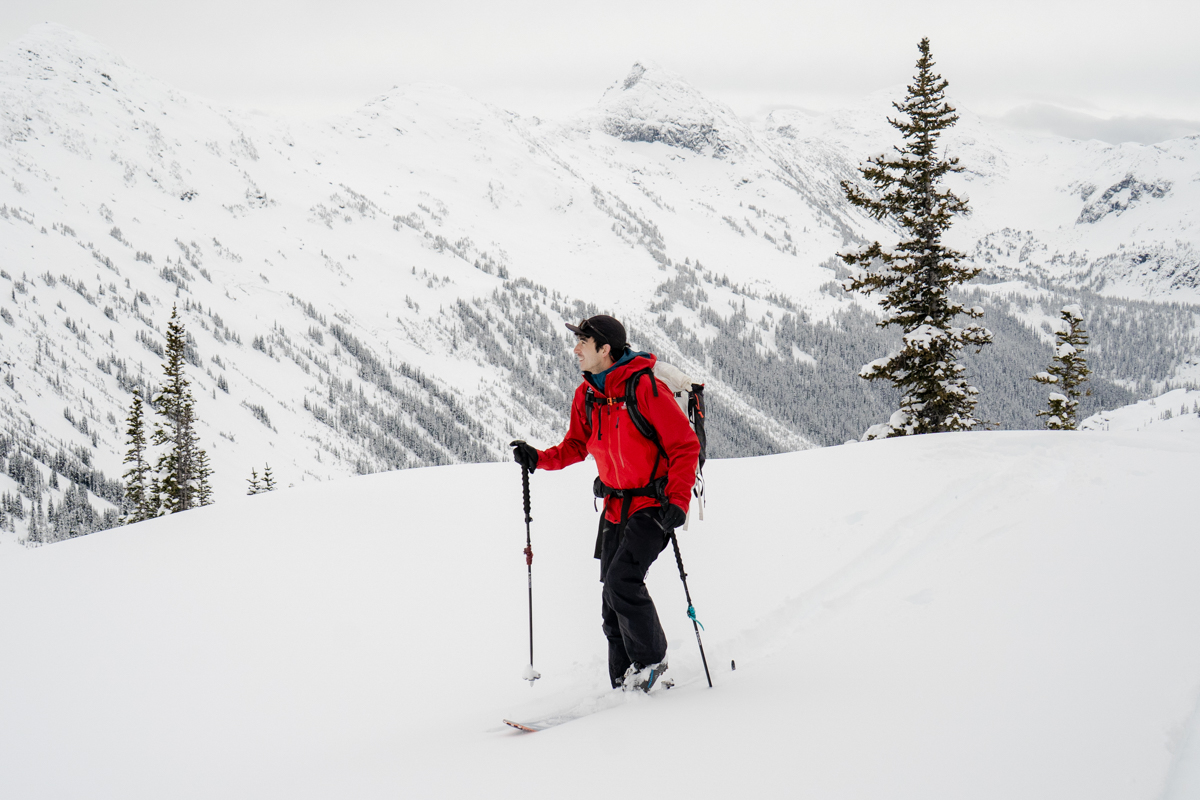
The interior textile lining is a small detail that proved essential when the going got especially sweaty. The soft material prevents the jacket from clinging to sweaty skin, keeping it comfortable and helping with breathability by not restricting airflow. That said, the Makalu is best suited for cool temperatures or lower-output situations like downhill skiing. If breathability is a top concern, it’d be best to opt for a thinner shell or a jacket with Gore’s more breathable membranes, like Gore-Tex Pro or Active.
Mountain Equipment has a rock-solid reputation among European climbers and mountaineers for their rugged, high-performance gear. After putting the Makalu jacket through its paces, it’s easy to see why. The 75D face fabric is impressively tough, shrugging off wear and tear from tree branches, ski edges, dog claws, and even chopping firewood. Every detail exudes quality, like the tight and precise stitching, fully-taped seams, and oversized zippers that hold up well to grit, sand, and dirt. Mountain Equipment also reinforced areas especially prone to delamination and damage, such as the hems, wrist cuffs, and pull tabs. Put together, the Makalu is a very durable layer that should last many years to come.
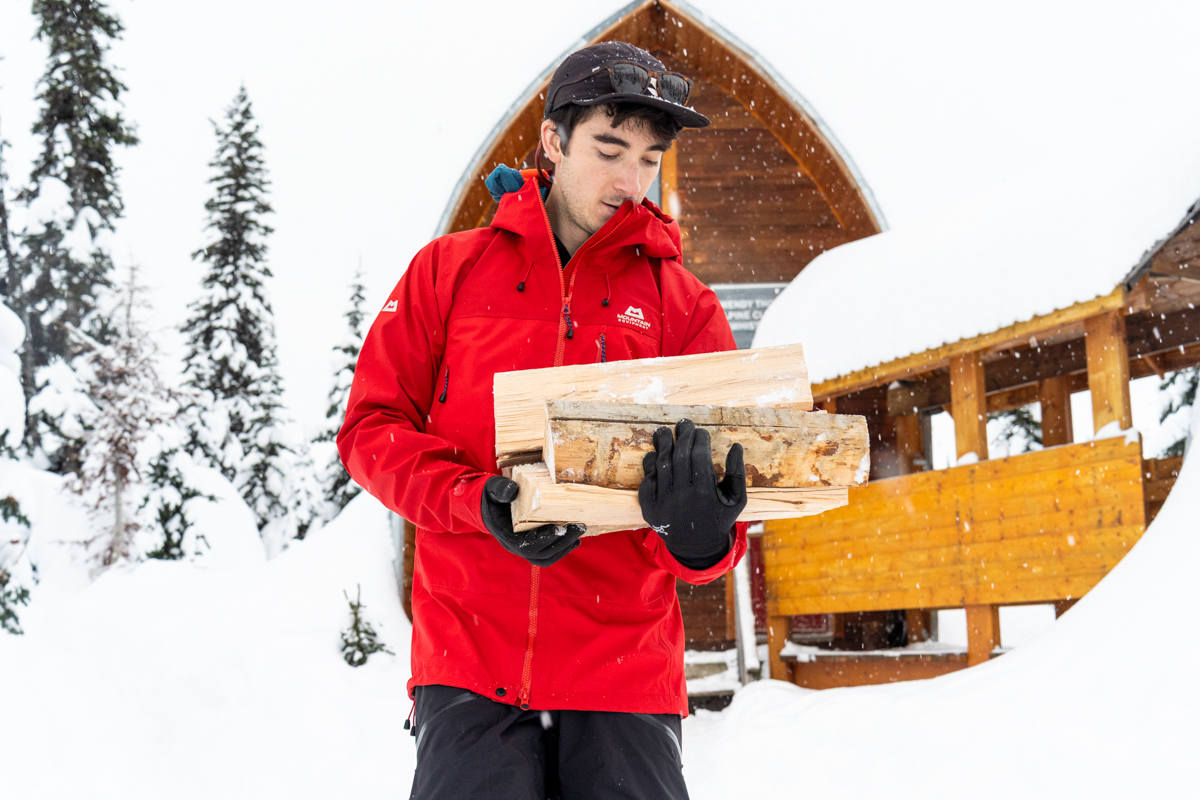
My men’s medium Makalu weighs 1 pound 2.0 ounces, which is a respectable weight for a highly protective hardshell. While it’s not as feathery as some minimalist competitors like the Arc’teryx Beta SL (12.0 oz.) or Patagonia’s M10 Shell (10.9 oz.), it strikes a reasonable balance for those who need a rugged, all-season jacket without excessive bulk. Mountain Equipment could have cut some weight by using a thinner denier fabric, smaller zippers, or forgoing some pockets, but this would have affected the usability and durability of the jacket. Its weight is on par with other all-arounders in the market, such as the Arc’teryx Beta AR (15.6 oz.) and Patagonia’s Triolet (1 lb. 2.0 oz.). And in practice, the weight of the Makalu wasn’t an issue. If anything, I appreciated the burly, confidence-inspiring build and the thoughtful features while skiing in challenging backcountry conditions. I just have one minor complaint: The larger zippers and wired-hood brim added some stiffness to the jacket, which made it slightly more difficult to roll into a tight ball. Still, this issue wasn’t inhibiting enough to keep me from reaching for the Makalu throughout the season.
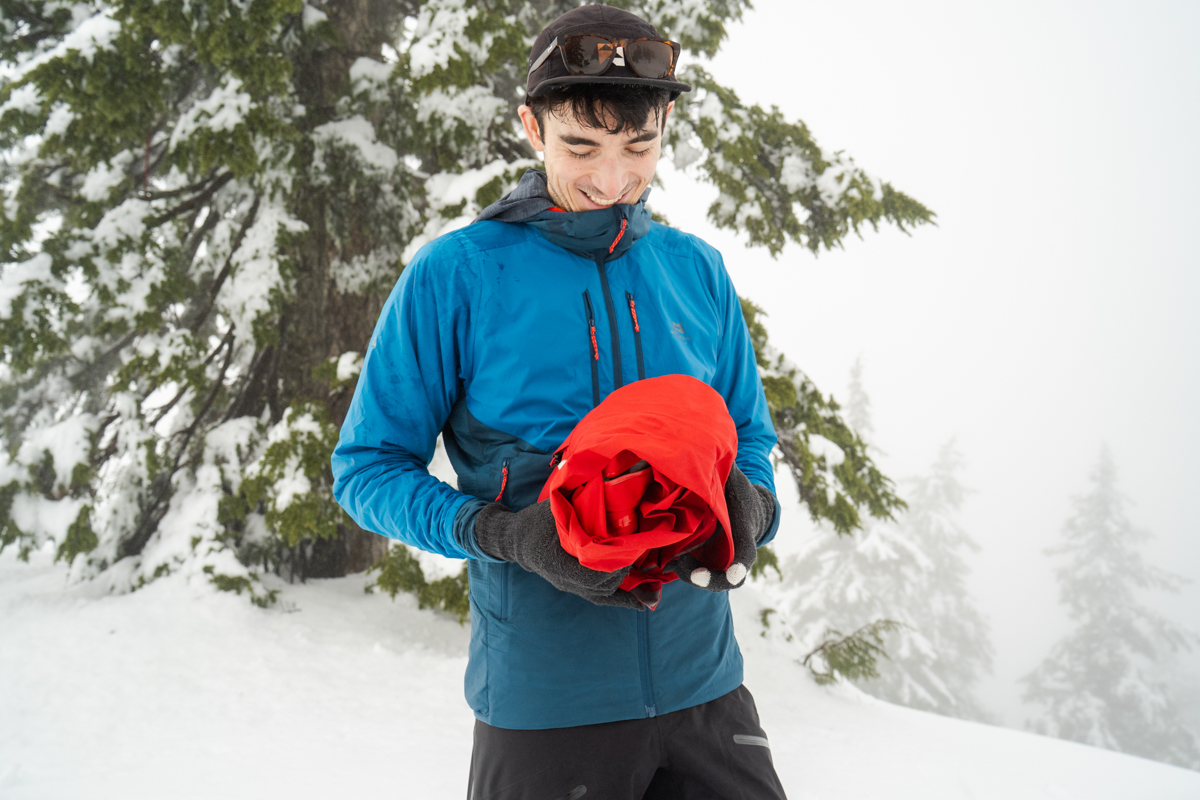
Gore-Tex shells are known to be crinkly and stiff, but I didn’t have this issue with the Makalu Jacket. The Gore-Tex ePE membrane is noticeably more supple than other Gore-Tex jackets I’ve worn. The trimmer alpine fit also minimized excess fabric and bulk, and articulated patterning in the arms made it easy to move around and perform tasks like adjusting my ski boots and attaching my climbing skins to the bottom of my skis. And like I mentioned above, the tricot backer is a real boon, offering next-to-skin comfort and effectively wicking sweat. Put together, the Makalu is a very comfortable jacket, especially for a hardshell.
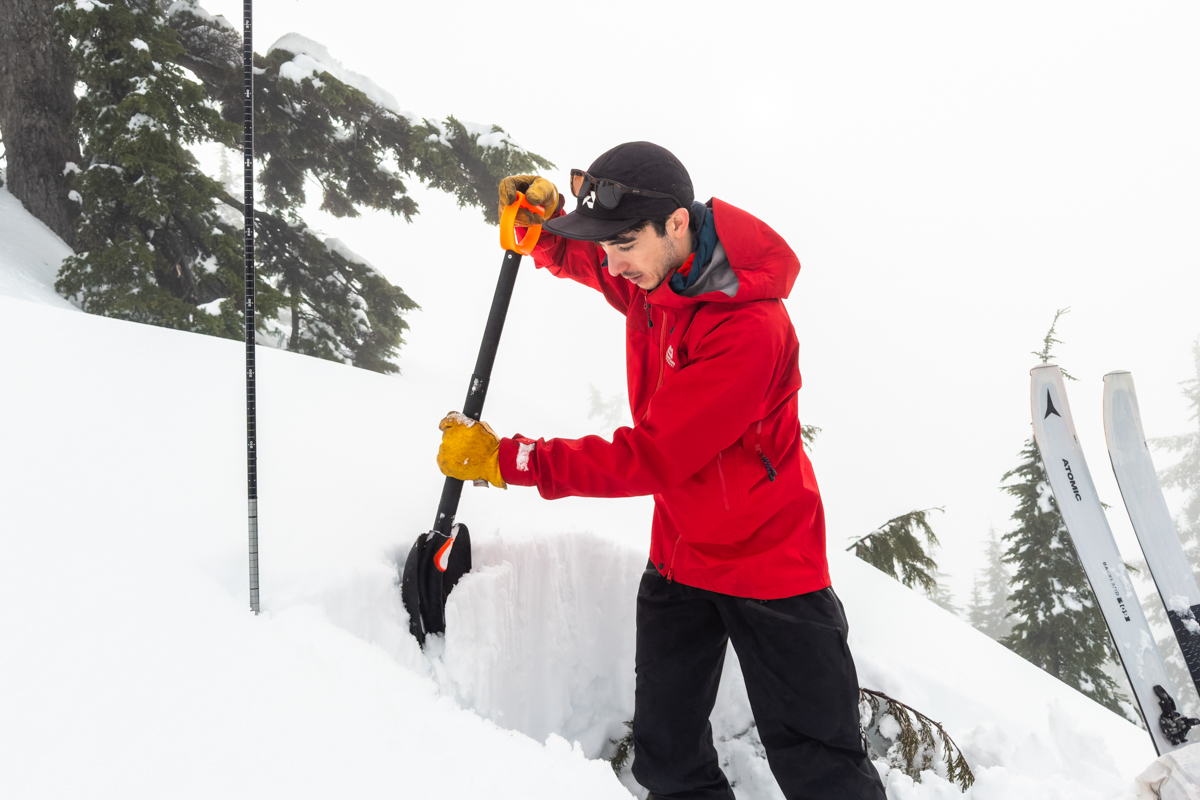
The Makalu’s featureset is utilitarian: It has everything you need for most mountain activities, but isn’t overloaded with bulky or unnecessary accessories. To start, the pocket design is well-sorted with harness-compatible hand pockets (which are situated higher on the jacket), a large Napoleon chest pocket, and an inner security pocket for small valuables. That said, the Makalu lacks interior drop pockets, which are ideal for storing climbing skins. The security pocket and hand pockets are pleated to optimize space, but they were still too small for my skins. That said, I was impressed with the size of the exterior Napoleon chest pocket, which is large enough to fit a map, radio, sunglasses, and midweight gloves with room to spare.
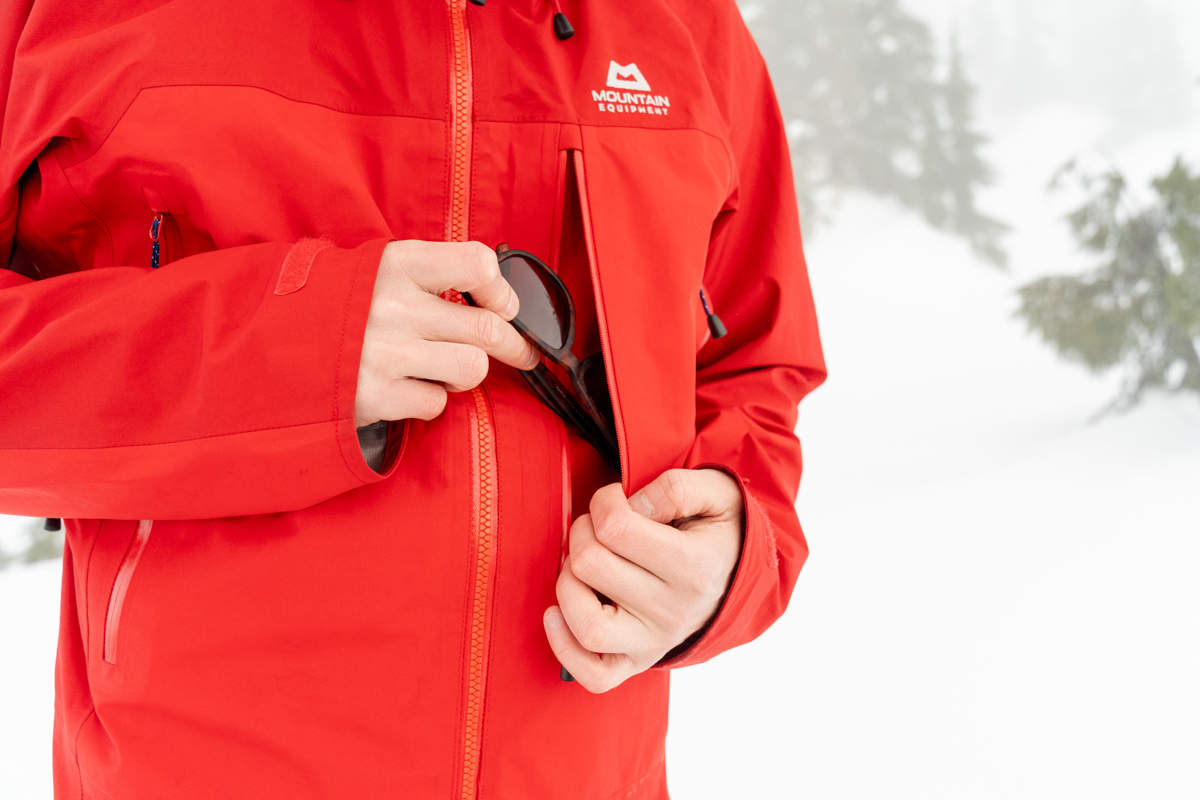
The aforementioned two-way front zipper is also helpful for accessing a harness when belaying. The hood easily swallowed my climbing helmet while still allowing for a full range of motion, but it was trickier to pull over my larger ski helmet. The high collar effectively blocked out wind and snow, and the stiffened brim on the hood prevented rain from falling on my face. Finally, I found the cold locks at the hem and hood easy to adjust on the fly, even when wearing gloves, and the two-way adjustment on the cord made it possible to dial in a fit that sealed out soggy conditions.
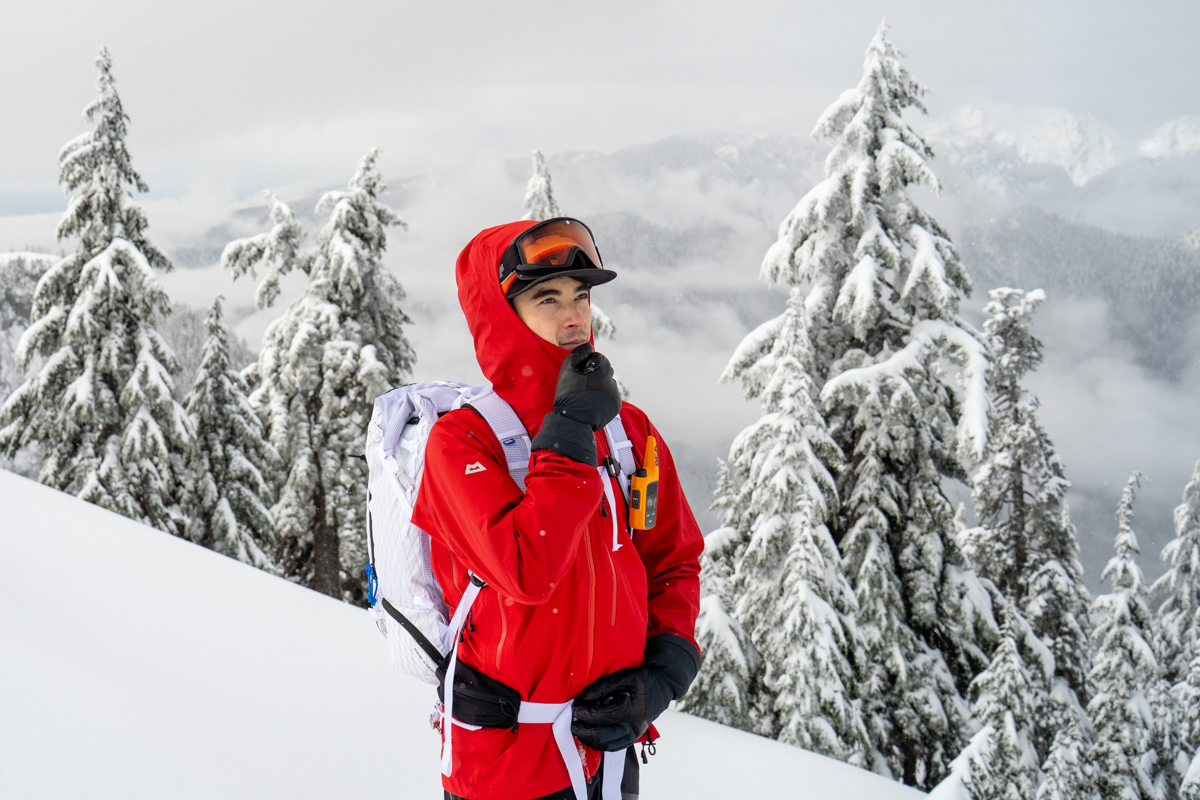
I normally wear a men’s medium hardshell, and I found the medium Makalu to fit true to size. That said, it’s worth pointing out that European brands usually cater to taller and leaner builds. The decidedly athletic fit (Mountain Equipment calls it "Alpine Fit") of the Makalu is especially trim, too. On cold days, I often found myself wanting more room to layer a midlayer, especially in the torso, shoulders, and elbows. Those with broad shoulders or who want to layer the Makalu over thicker down or synthetic jackets may want to consider sizing up for comfort. Skiers also might have better luck with a dedicated ski shell, especially those with a looser, freeride style that better accommodates layers. But if you’re on the hunt for an athletic-fitting hardshell that minimizes bulk, the Makalu is worth a look.
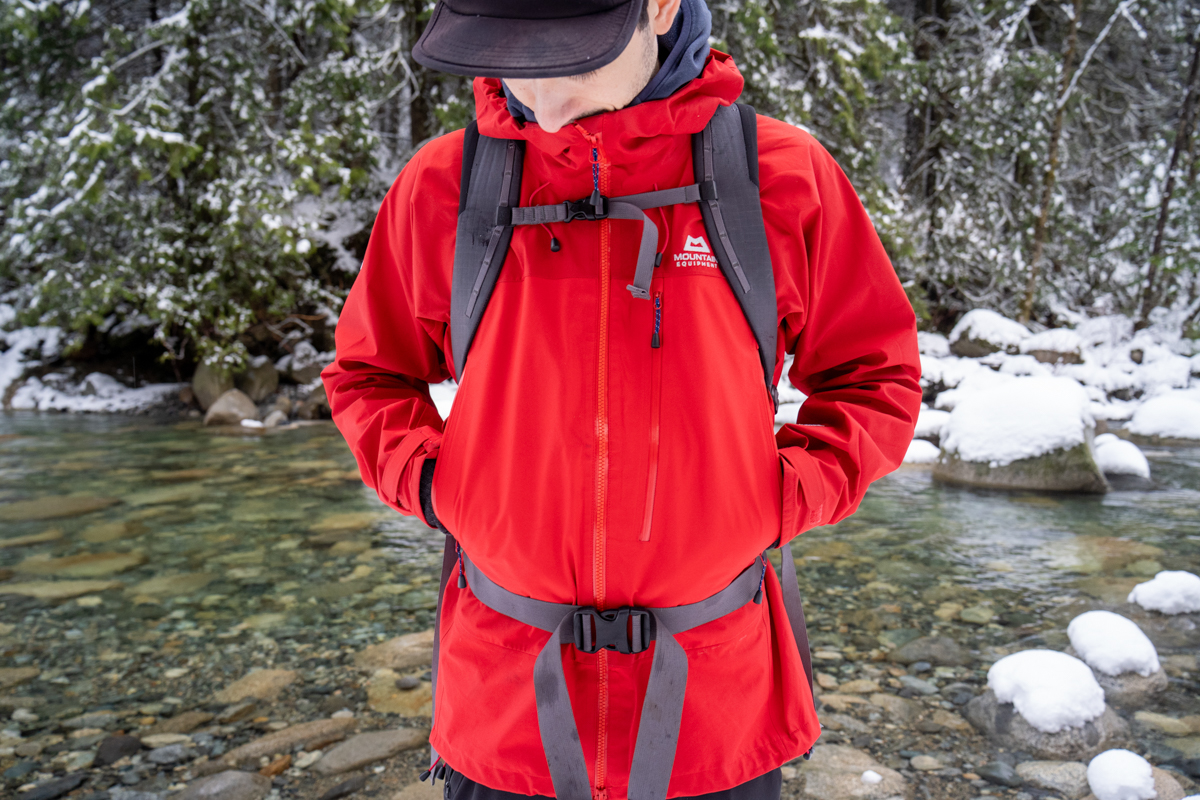
Sustainability has become a high priority in the outdoor gear market of late, and waterproofing technology has been a particular focus. Most notably, many brands are switching to PFAS-free waterproof membranes, which are free from added perfluorocarbons or “forever chemicals” that are known to be harmful to the environment. Mountain Equipment is no exception, and their Makalu jacket uses Gore-Tex’s ePE fabric, which is PFAS-free. The Makalu is also constructed with a recycled polyester face fabric. Overall, I'm impressed with Mountain Equipment's efforts here, but I think there's still room to grow, such as aiming to use more Bluesign-approved materials in their manufacturing.
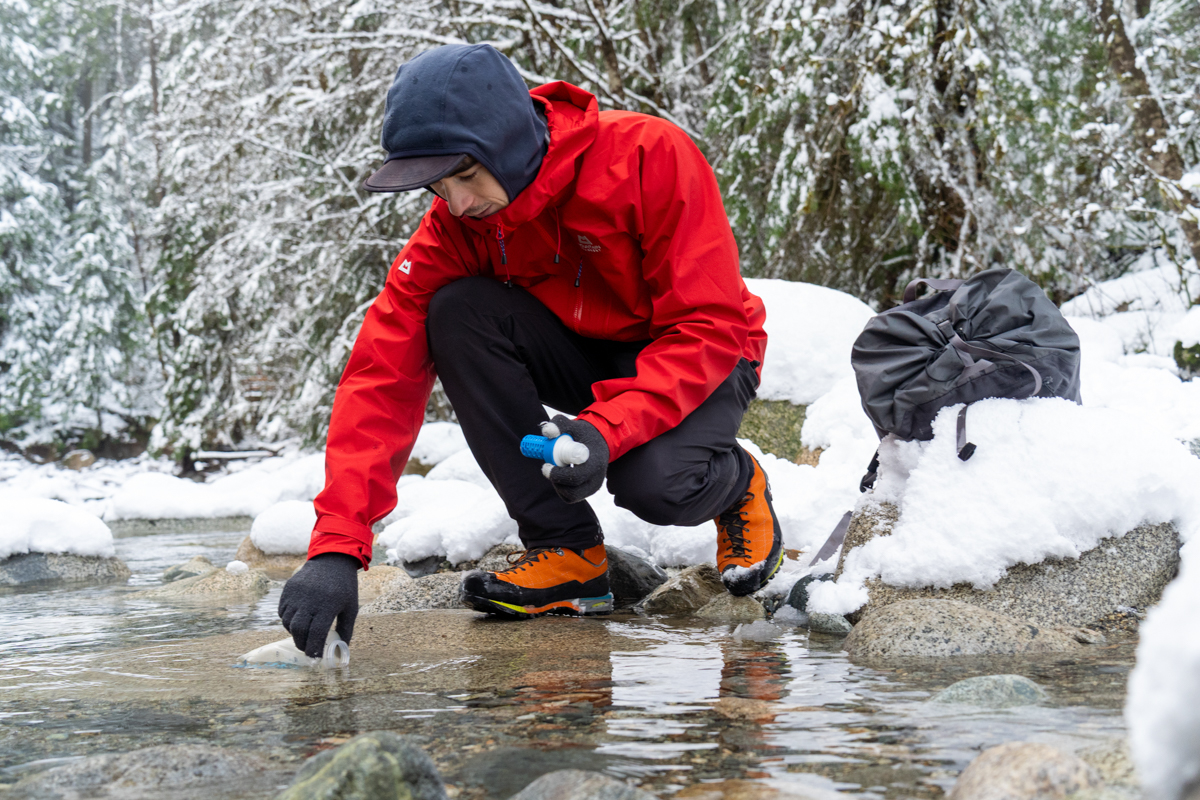
I tested the men’s version of the Makalu hardshell, but the jacket is also available in a women’s-specific fit for the same price. The women’s version features an identical construction and feature set as the men’s, including underarm zips, a climbing helmet-compatible hood, and pocket configuration. The women’s comes in slightly lighter at 1 pound 0.9 ounces simply because it’s smaller and uses less fabric. And if you want to complete your kit, the Makalu line also includes hardshell pants, which are also constructed with 75D Gore-Tex ePE fabric.
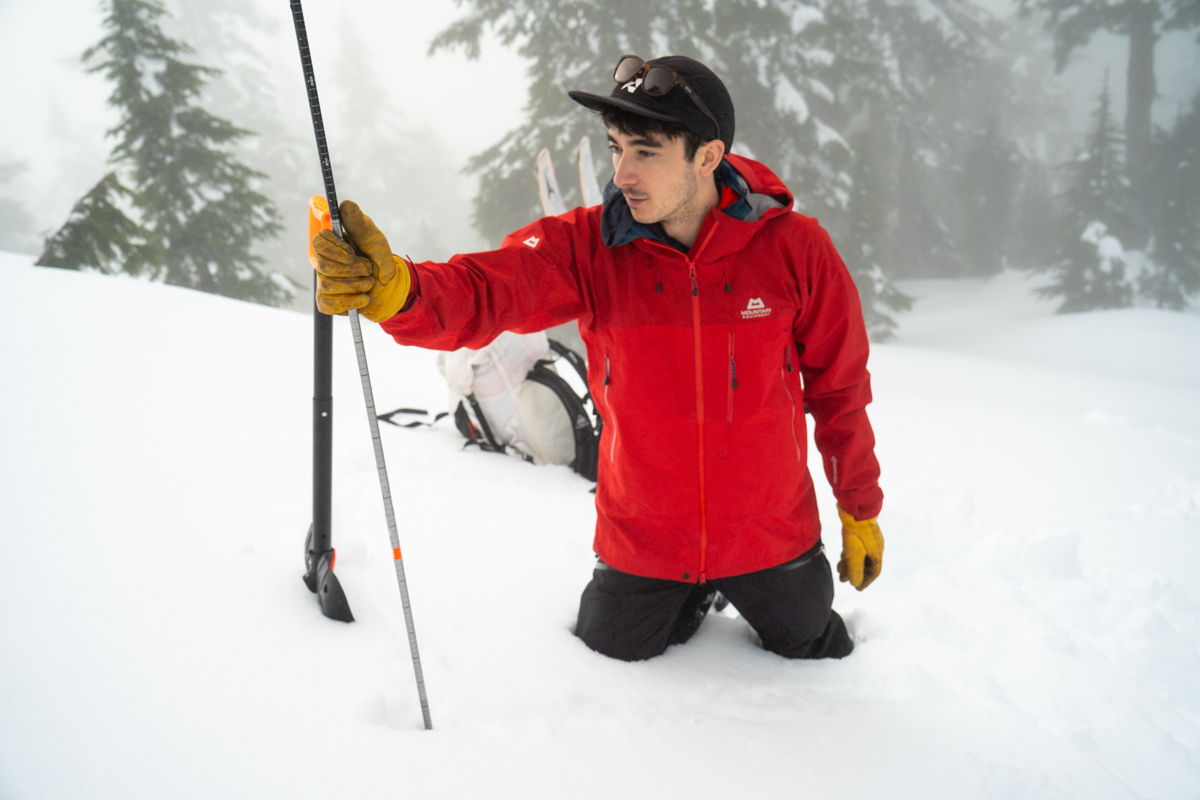
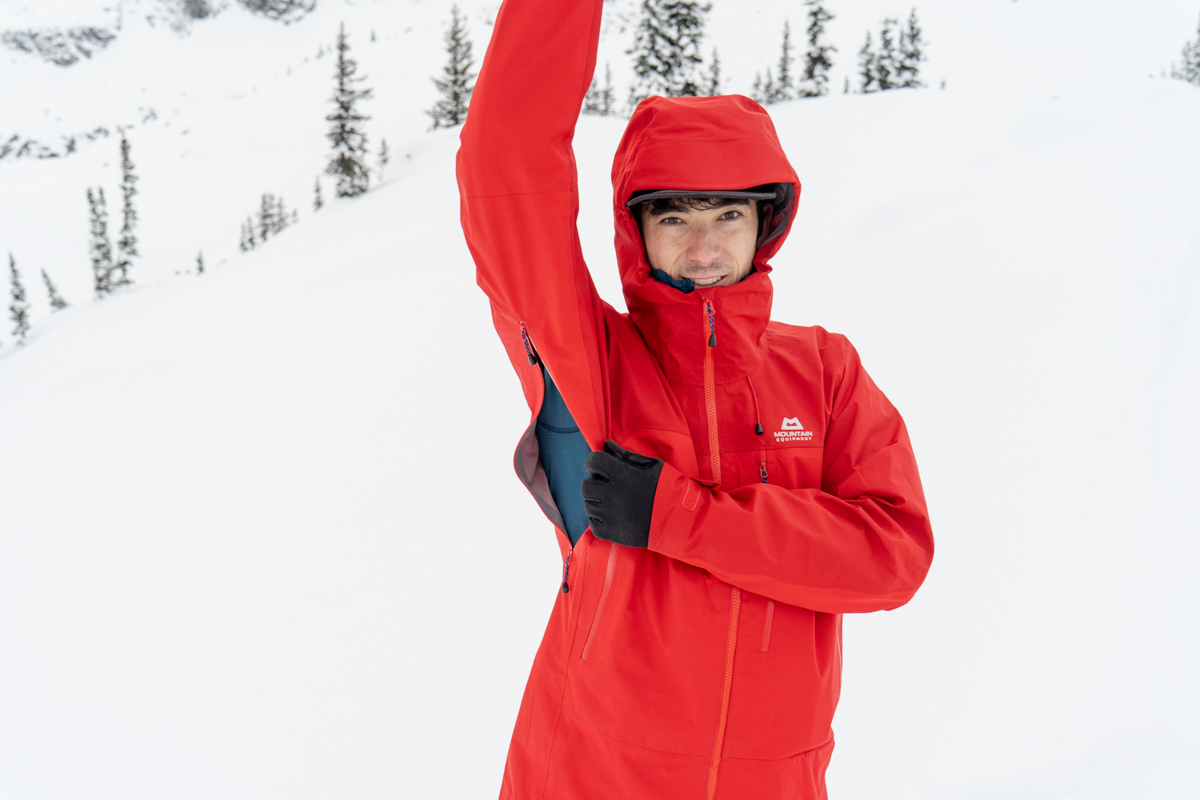
| Jacket | Price | Weight | Waterproofing | Denier | Pit Zips | Pockets |
|---|---|---|---|---|---|---|
| ME Makalu Jacket | $430 | 1 lb. 2.0 oz. | Gore-Tex ePE | 75D | Yes | 4 |
| Arc'teryx Beta AR Jacket | $600 | 1 lb. 0.3 oz. | Gore-Tex Pro | 40 & 80D | Yes | 3 |
| Norronna Trollveggen GTX | $699 | 15.2 oz. | Gore-Tex ePE | 70 & 160D | Yes | 2 |
| Patagonia Triolet Jacket | $449 | 1 lb. 2.0 oz. | Gore-Tex | 75D | Yes | 5 |
| Arc'teryx Beta SL Jacket | $500 | 12.0 oz. | Gore-Tex ePE | 40 & 70D | Yes | 3 |
While the Makalu offers a tough-to-beat combination of protection, comfort, and price, the hardshell market is flush with options. Arc’teryx’s Beta AR and Norrona’s Trollveggen Gore-Tex Pro Light are two alternatives to consider if protection is high on your priority list. The Beta AR features Gore’s most premium Pro waterproofing, which we’ve found to be more breathable than the Makalu’s ePE without compromising protection. This do-it-all hardshell has all the necessary trimmings—including harness-compatible hand pockets and a helmet-compatible hood—and a more layering-friendly fit in a 2-ounce lighter package. Norrona’s Trollveggen Gore-Tex Pro light has an impressively burly face fabric with 160D reinforcements, and still remains lighter than the Makalu at under 1 pound. Though, confusingly, the Trollveggen uses Gore-Tex ePE waterproofing, which isn’t as well-rounded as the Beta’s Gore-Tex Pro. That said, the Makalu takes the cake on value over both: For considerably less, it’s almost equally as premium and protective with only a small hit in terms of weight.
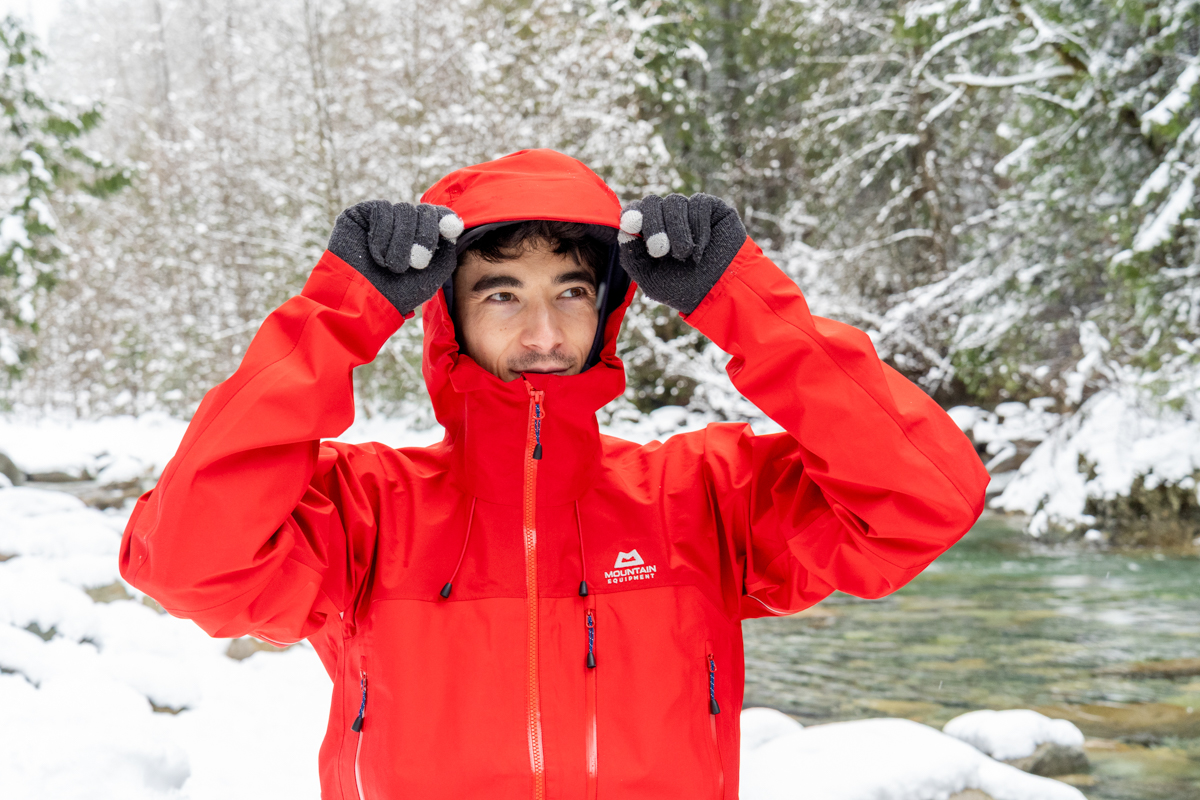
Patagonia’s Triolet and Arc’teryx’s Beta SL are more in line with the Makalu in terms of cost. In fact, the Makalu and Triolet have much more in common, including a 75D Gore-Tex membrane. The Triolet does have a stronger ski appeal with an interior drop pocket (great for gloves and skins), an extended cut that easily accommodates midlayers, and a ski helmet-compatible hood, but we found it to be overbuilt for most non-skiing adventures, like climbing and hiking. Arc’teryx’s Beta SL is a more streamlined version of the aforementioned Beta AR, featuring Gore-Tex ePE waterproofing, slightly thinner fabrics, and a feathery-light 12-ounce build. But it lacks the true bombproof feel of thicker hardshells, and its athletic fit runs into the same layering issue as the Makalu. At the end of the day, it all comes down to personal preference, but the Makalu is a great all-around mountain jacket at a hard-to-beat price, earning it a respectable rank among our favorites.
Back to the Mountain Equipment Makalu Jacket Review See our Hardshell Jacket Guide